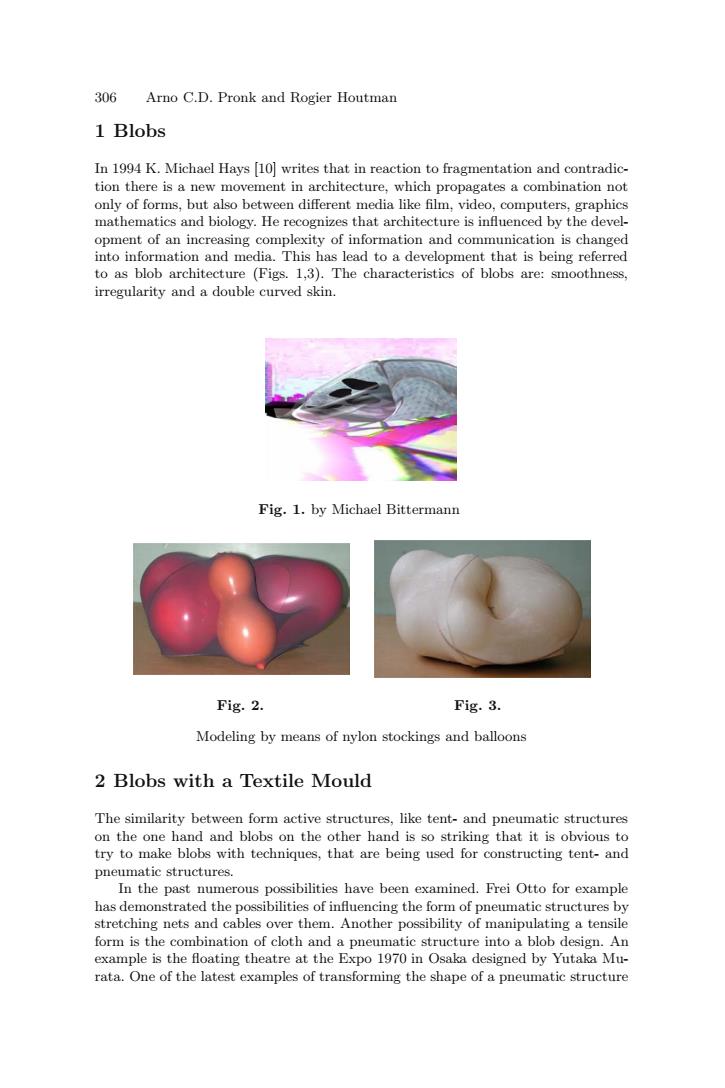正在加载图片...

306 Arno C.D.Pronk and Rogier Houtman 1 Blobs In 1994 K.Michael Hays [10]writes that in reaction to fragmentation and contradic- tion there is a new movement in architecture,which propagates a combination not only of forms,but also between different media like film,video,computers,graphics mathematics and biology.He recognizes that architecture is influenced by the devel- opment of an increasing complexity of information and communication is changed into information and media.This has lead to a development that is being referred to as blob architecture (Figs.1,3).The characteristics of blobs are:smoothness, irregularity and a double curved skin. Fig.1.by Michael Bittermann Fig.2. Fig.3. Modeling by means of nylon stockings and balloons 2 Blobs with a Textile Mould The similarity between form active structures,like tent-and pneumatic structures on the one hand and blobs on the other hand is so striking that it is obvious to try to make blobs with techniques,that are being used for constructing tent-and pneumatic structures. In the past numerous possibilities have been examined.Frei Otto for example has demonstrated the possibilities of influencing the form of pneumatic structures by stretching nets and cables over them.Another possibility of manipulating a tensile form is the combination of cloth and a pneumatic structure into a blob design.An example is the floating theatre at the Expo 1970 in Osaka designed by Yutaka Mu- rata.One of the latest examples of transforming the shape of a pneumatic structure306 Arno C.D. Pronk and Rogier Houtman 1 Blobs In 1994 K. Michael Hays [10] writes that in reaction to fragmentation and contradiction there is a new movement in architecture, which propagates a combination not only of forms, but also between different media like film, video, computers, graphics mathematics and biology. He recognizes that architecture is influenced by the development of an increasing complexity of information and communication is changed into information and media. This has lead to a development that is being referred to as blob architecture (Figs. 1,3). The characteristics of blobs are: smoothness, irregularity and a double curved skin. Fig. 1. by Michael Bittermann Fig. 2. Fig. 3. Modeling by means of nylon stockings and balloons 2 Blobs with a Textile Mould The similarity between form active structures, like tent- and pneumatic structures on the one hand and blobs on the other hand is so striking that it is obvious to try to make blobs with techniques, that are being used for constructing tent- and pneumatic structures. In the past numerous possibilities have been examined. Frei Otto for example has demonstrated the possibilities of influencing the form of pneumatic structures by stretching nets and cables over them. Another possibility of manipulating a tensile form is the combination of cloth and a pneumatic structure into a blob design. An example is the floating theatre at the Expo 1970 in Osaka designed by Yutaka Murata. One of the latest examples of transforming the shape of a pneumatic structure